Use fresh ingredients

The secret to any exceptional recipe lies in the quality of its ingredients. If you attempt to prepare your salad with limp lettuce and stale Parmesan cheese, you won't achieve the vibrant flavor you're aiming for. However, starting with fresh lettuce and quality toppings can make a significant difference.
Rena Awada, the owner and head chef at Healthy Fitness Meals, emphasizes that using top-notch ingredients is crucial for crafting a delicious Caesar salad. "I always ensure that every ingredient, from the lettuce to the croutons, is fresh and of the highest quality. This greatly impacts the salad's taste and texture. Everything will be crisp and flavorful, just as it should be," Awada explained. "Purchase your ingredients on the same day you intend to make the salad, or at the very least, the day before."
Sabrina Snyder, a personal chef and food blogger at Dinner, then Dessert, echoed this advice. She straightforwardly told Chowhound, "The fresher and more homemade your ingredients are, the better your salad will turn out!" While it may seem like a simple concept, it’s vital. Unlike baked or cooked recipes, salad ingredients remain raw, leaving no room to mask the flavors of your vegetables and toppings if they aren't at their freshest.
Make homemade Caesar Salad dressing

Much of the rich, savory taste we associate with a traditional Caesar salad originates from the Caesar dressing. The umami of anchovy paste combined with fresh lemon juice creates a surprisingly bold and balanced flavor profile. To truly capture that authentic taste, making your dressing from scratch is the best approach. Store-bought dressings are produced, packaged, shipped, and stored before reaching your refrigerator, which often means they lack fresh ingredients and require preservatives for safety. By preparing Caesar dressing at home, you can bypass these issues and craft a superior, creamier, and more flavorful dressing. According to Sabrina Snyder, making homemade Caesar dressing is simpler than you might think, and it allows you to have full control over the ingredients and flavors in your dish. Rena Awada echoed this sentiment, suggesting a straightforward blend of classic ingredients such as anchovies, garlic, Dijon mustard, lemon juice, and olive oil for your dressing.
However, while homemade dressing is fantastic if you have the time and ingredients, it’s not always practical. In such cases, Awada noted that you can still create a delicious salad using premade dressing. "If you're pressed for time, there's nothing wrong with opting for a high-quality store-bought dressing. Just make sure to select one made with real ingredients, avoiding those filled with artificial flavors and preservatives," she advised. You can also enhance store-bought dressing by adding fresh ingredients like lemon juice and herbs to elevate the flavor.
Avoid over-dressing the salad
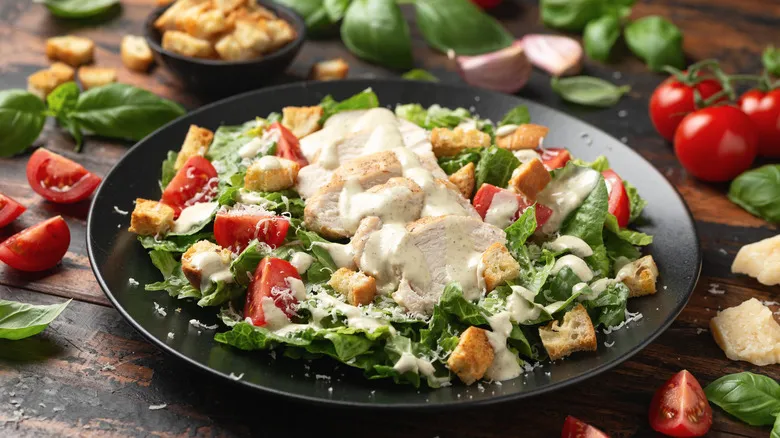
Just as the choice of Caesar dressing can significantly influence the quality of your salad, the quantity of dressing you use also plays a crucial role. Caesar dressing is a standout element of the salad, with its creamy, savory, and fresh flavors tempting you to generously coat your greens. However, this is a classic case where moderation is key. The ideal amount of dressing enhances the crispness of the salad ingredients, while too much can overpower them.
"The secret to an exceptional Caesar salad lies in achieving balance, which includes the dressing," Rena Awada noted. "You don’t want to smother your lettuce in dressing, as this will make it soggy and mask the other flavors." While an overdressed salad might be enjoyable for the first few bites, the crisp leaves will quickly lose their texture under the weight of the dressing.
Fortunately, avoiding this common pitfall is simple! "Begin with a small amount of dressing on the lettuce, toss it, and then add more if necessary," Awada advised. "You can always add more dressing later, but once it’s on, you can’t take it back." When serving, consider placing extra dressing on the side, allowing for easy drizzling if more is desired.
Get creative with your toppings

Classic Caesar salads are quite straightforward, featuring Romaine lettuce, croutons, and dressing, but there's no need to limit yourself to just the basics. You can elevate your salad by incorporating a variety of exciting toppings. There are numerous ways to get inventive with fresh, flavorful ingredients to personalize the traditional recipe.
Sabrina Snyder and Rena Awada have shared some of their favorite Caesar salad enhancements that can turn a simple dish into a restaurant-quality creation. "Incorporating one or two unique ingredients can instantly elevate your salad," Snyder noted. "Crispy bacon or prosciutto complement the tangy, briny dressing beautifully while adding extra crunch." She also suggested a few more ideas, saying, "Include homemade Parmesan cheese crisps alongside freshly grated cheese for added texture and a richer Parmesan flavor. Introduce some vibrancy with grape or cherry tomatoes in different hues. Sun-dried tomatoes or roasted red bell peppers are also excellent choices to elevate your salad."
Awada suggested adding even more delectable ingredients, such as creamy avocado slices, grilled chicken, or grilled shrimp, to create a heartier, protein-packed salad. Consider trying these chef-recommended toppings or other delicious additions like crispy bacon, hard-boiled eggs, and more.
Try homemade croutons
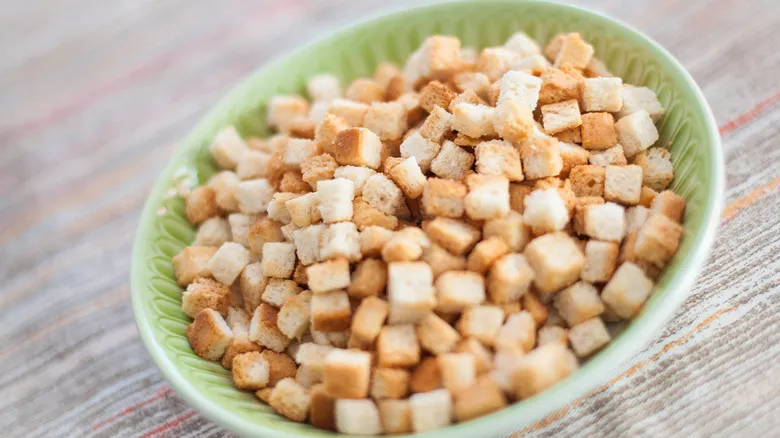
When it comes to toppings, incorporating fresh, crunchy croutons can significantly elevate your Caesar salad. Quality croutons provide a delightful crunch and subtle flavor that beautifully contrasts with the creamy dressing and other salad components. As mentioned regarding the Caesar dressing, the fresher and more homemade the ingredients in your salad, the more gourmet it will taste—this principle applies equally to croutons.
Rather than relying on overly hard, stale, store-bought croutons, you can easily create your own using bread cubes and a few simple ingredients to achieve the ideal texture and flavor. Chef James Callery from Cross Keys shared his technique for making the ultimate croutons with Chowhound. He suggests using day-old bread cubes, tossing them in olive oil, minced garlic, and fresh herbs. Spread the coated bread cubes on a baking sheet and bake until they are golden and crispy.
Making your own croutons is a fantastic way to utilize stale bread that you might not want to serve fresh. They are a versatile ingredient that can be used in various recipes, such as homemade breadcrumbs, French toast, and croutons, as slightly stale bread absorbs flavors well and toasts beautifully. Even renowned chef Jacques Pepin uses day-old bread for pancakes.
Give the lettuce an ice bath
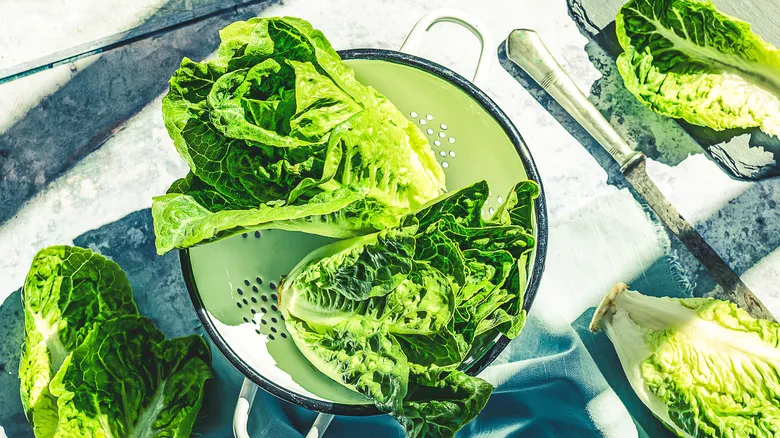
While many well-known salad recipes feature a combination of lettuce and various greens, Caesar salad exclusively uses Romaine lettuce to create its crisp and refreshing foundation. Since a significant portion of the dish is made up of Romaine, it's crucial to select the freshest and most flavorful heads. The first step to achieving delicious Romaine is to choose lettuce heads with vibrant green leaves and no signs of wilting. The next step involves properly preparing the lettuce.
Sabrina Snyder revealed her secret for ensuring fresh and crunchy leaves: giving them an ice water bath. "Start by rinsing the lettuce leaves, then immerse them in ice water, drain them thoroughly, and finally, lay them out on a paper towel to dry for a few minutes," Snyder advised. Although this may seem like an unnecessary step, Snyder insists it significantly enhances the texture of your salad. "The ice bath rapidly cools the lettuce for a refreshing crunch and enhances its flavor," she noted. "Thoroughly drying the leaves prevents your salad from becoming soggy and allows the dressing to adhere better to the lettuce."
Add a spicy kick to store-bought dressing
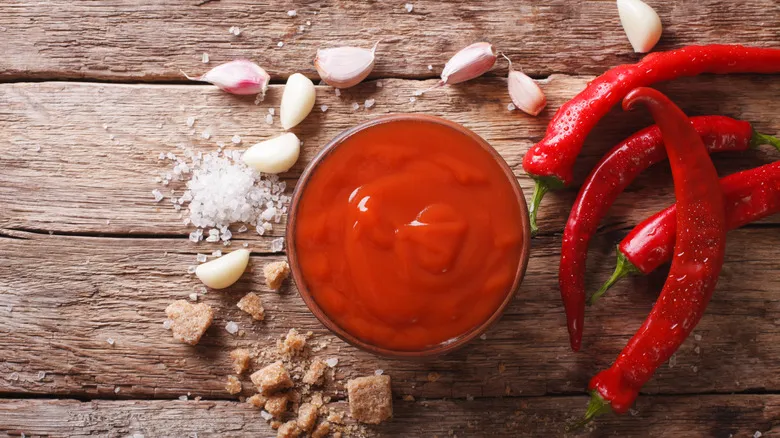
If you prefer not to prepare your dressing from scratch, you can still enhance its flavor with delightful and surprising additions to elevate its quality. While making your own dressing is straightforward, there are times when you may lack the time or energy for a fully homemade salad. Personalizing a store-bought dressing strikes a perfect balance. It allows you to save time while still creating a unique salad. Choose your favorite store-bought Caesar dressing made with wholesome, fresh ingredients, and then incorporate flavor enhancers from your pantry before serving.
One of the most effective ways to add a personal touch to your Caesar dressing is by introducing a spicy element. You can easily achieve this by blending Sriracha with your bottled Caesar dressing. Start with a small amount of chili sauce, gradually adding more to avoid overwhelming the flavor. Mix the ingredients, taste, and continue to add hot sauce until you reach your desired level of spiciness.
This technique is fantastic for enhancing store-bought sauces, but it also works well if you’re making your own dressing. Simply combine hot sauce with your other ingredients to create a spicy Caesar dressing from scratch.
Slice the lettuce instead of tearing
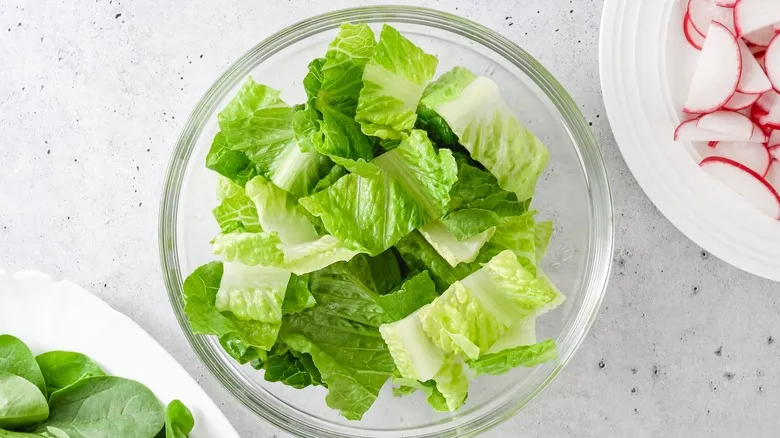
Here’s a quick tip that can significantly improve your Caesar salad: the way you cut the lettuce. To ensure the salad is easy to enjoy, it's best to have all the ingredients in bite-sized pieces. While tearing the lettuce by hand is simple, chefs suggest taking a moment to use a cutting board and a sharp knife to chop the romaine instead.
Sabrina Snyder points out several advantages to chopping the lettuce rather than tearing it. "Not only will you achieve uniform bite-sized pieces, but your lettuce will also remain crisper and cooler. The heat from your hands can cause the leaves to warm up and wilt," Snyder noted. Although chopping the lettuce requires a bit more time, it enhances the salad's flavor and texture, making it easier to eat. By combining the ice bath technique with chopped lettuce, you'll create a crisp, cool, and refreshing base for your salad.
Add fruit for contrasting flavor
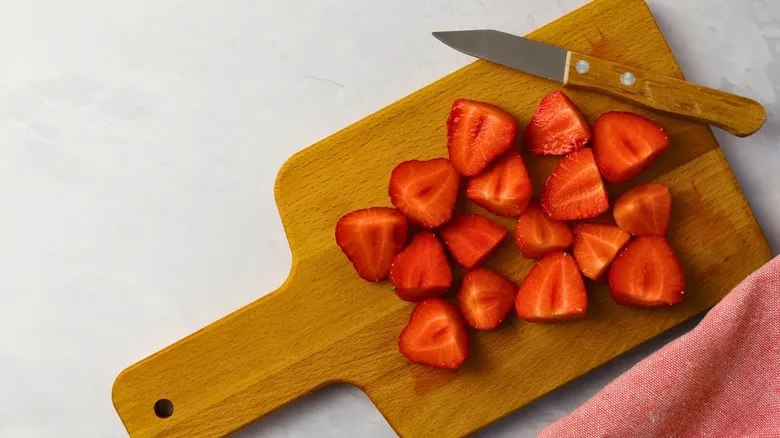
Occasionally, an unexpected ingredient can provide the refreshing twist needed for a classic recipe. There are numerous tasty and savory toppings you can incorporate into a Caesar salad, such as bacon, cheese, and various vegetables. While these additions are delightful, they are quite common. If you're seeking something a bit more unconventional and surprising, chef Rena Awada recommends introducing a sweet element with fresh fruit.
"I realize this might seem unusual, but every so often, I enjoy adding fresh fruit to my Caesar salad," Awada explained. "The sweetness of the fruit surprisingly complements the tangy dressing and brings a refreshing quality to the dish. Fruits like sliced apples, berries, or even diced mango work particularly well."
Choose one or two fruits that pair nicely together, and ensure that your other toppings harmonize with the fruit additions. For instance, the sharp, nutty flavor of freshly shaved Parmesan pairs beautifully with sweet and tart fruits. If you decide to include fruit in your salad, it's advisable to purchase whole fruits and cut them into bite-sized pieces rather than opting for pre-cut options. Not only is whole fruit generally fresher, but it also helps avoid the contamination risks associated with pre-cut produce.
Top it off with fresh marinated chicken

One of the most popular methods to enhance the flavor, texture, and protein content of a basic Caesar salad is by adding sliced chicken on top. Without the chicken, a Caesar salad—comprising only Romaine lettuce, dressing, and croutons—tends to be more of a light side dish rather than a full meal. However, incorporating meat transforms it into a nutritious and satisfying dish suitable for lunch or dinner. To achieve perfectly tender and juicy chicken for your salad, chef James Callery suggests marinating and grilling the chicken. For a simple yet effective marinade, he recommends combining olive oil, lemon juice, minced garlic, and fresh herbs. Allow the chicken to soak in the marinade for a few hours, then grill it until it’s golden brown and fully cooked. Once done, slice the chicken and mix it into the bowl of lettuce along with the dressing, croutons, and any additional toppings you desire.
This is an excellent choice if you have the time to cook chicken. However, if you're looking for a quicker alternative, you can utilize leftovers. The next time you prepare a whole roasted chicken for dinner, save the leftover meat in the refrigerator to create a quick and satisfying salad the following day. If you don’t have any leftovers, canned chicken can serve as a convenient pre-cooked option. Use simple techniques to enhance the flavor of your canned chicken, making it a tasty addition to your salad.
Wait to add your protein
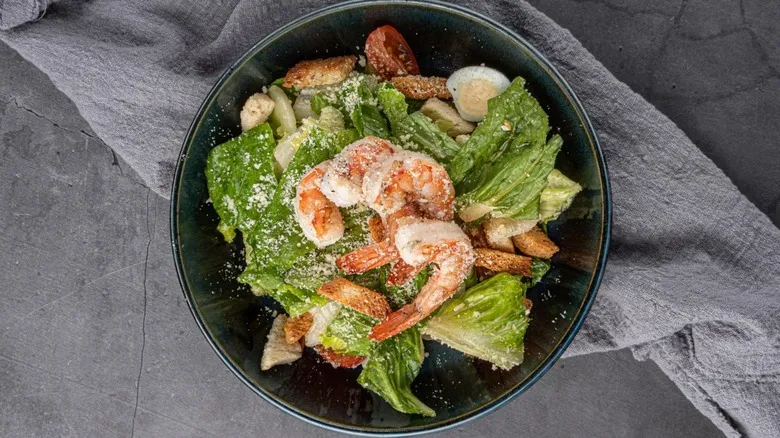
Incorporating proteins such as chicken, shrimp, turkey, or tuna can significantly enhance your Caesar salad. To elevate the dish even further, Rena Awada suggests adding the meat or seafood while it's still warm. While we typically prefer our salad ingredients chilled—keeping vegetables, cheese, and dressing fresh and crisp—Awada points out that warm protein is a delightful exception. She advises waiting to add the meat until the final step of preparation.
"I personally enjoy it when the protein in my Caesar salad is slightly warm, especially with chicken or shrimp. I prefer to cook the protein separately and add it to the salad at the end while it's still warm," Awada explains. "This not only creates a wonderful temperature contrast but also helps the protein stay tender and juicy. It's a simple adjustment, but it greatly enhances the overall flavor of the salad." Additionally, warm meat is easier to bite into compared to cold chunks.
For those who are vegetarian, vegan, or simply looking to reduce meat consumption, you can apply this technique with plant-based proteins. Chickpeas or crispy tofu can make the salad more satisfying and protein-rich without any meat. To adhere to Awada's advice, cook the vegetarian alternatives and add them to the salad while they are still warm. For a delicious grilled tofu topping, opt for firm tofu and cook it until it becomes crispy.
Recommended
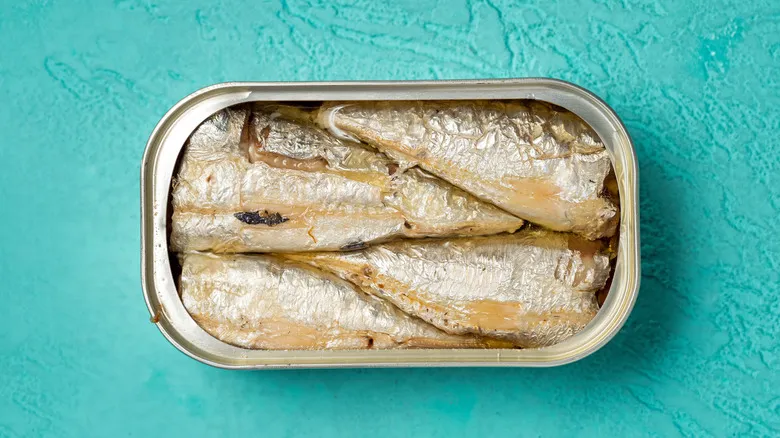
The Best Canned Sardines To Eat If You're Afraid You'll Hate Them

The Luxury Cutting Board Ina Garten And Giada De Laurentiis Swear By

2 Steps You Should Always Take Halfway Through Air Frying Food

The Right Way To Air Fry Hot Pockets For Crispy, Gooey Results
Next up

